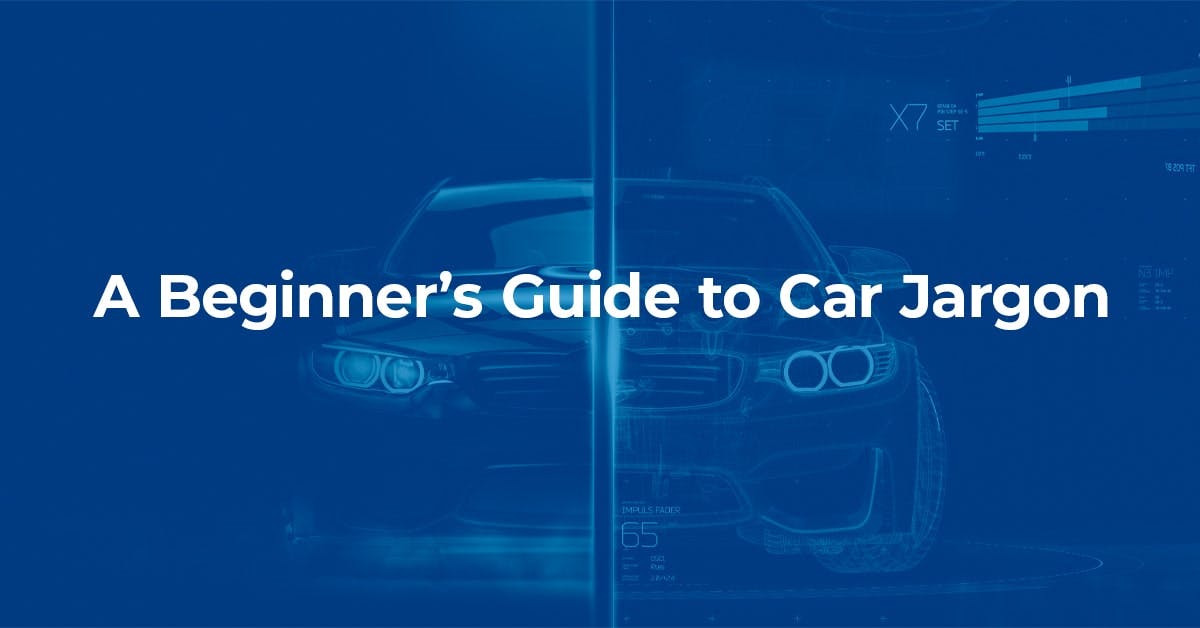Understanding your car can be complicated enough without all the jargon involved - especially for new drivers.
In this article, we’ve simplified the process for you by providing definitions for some of the phrases and services you might hear in relation to your car.
We’ve focused on those terms that might be unfamiliar to you, or otherwise confusing to understand.
You’ll definitely know your wheel alignment from your wheel balancing after reading this article.
Page Contents
ABS (Anti-lock Braking System)
In an emergency, your car’s anti-lock braking system (ABS) can restore traction to your tyres and prevent your wheels from locking up so that you can safely steer your vehicle.
The wheel sensors in your car can detect when the tyres are locking up if you brake too hard or stop suddenly.
The electronic ABS system can then automatically apply and release the brakes in a quick, controlled manner.
The driver can stay in control of their car and avoid skidding as a result, which is especially useful when driving on wet road surfaces.
Alternator
If your car has a combustion engine then it won’t run without an alternator.
Made up of a rotor and stator, voltage regulator, diode rectifier and cooling fan, your car’s alternator funnels electricity to the electrical components in your vehicle, and recharges the battery.
The alternator is responsible for several components of your car - it runs the radio, heater and headlights amongst other things.
Aquaplaning
If your tyre tread is low, then you may experience aquaplaning.
This is when a layer of water builds up between your tyres and the road, which can cause you to lose control of your vehicle.
You should always aim to inflate your tyres when needed, so that you don’t experience this for yourself.
Black Ice
Black ice refers to a thin layer of ice that covers the top of a road.
Black ice is transparent, and not always noticeable - which is why you need to take extra care when driving in icy conditions.
Brake Calipers
If your vehicle uses a disc and pad braking system, then it will use brake calipers.
Brake calipers clamp the brake pads down on the brake discs, allowing your car to slow down or stop.
Brake pads are attached to the sides of your car’s brake calipers, and come into contact with the brake discs whilst braking.
Rear brake pads tend to last longer as the majority of cars use front wheel drive.
Cambelt
The cambelt is located deep within the engine, so it’s no wonder you may never have heard of or spoken about it before.
It synchronises the crankshaft and camshaft in order to open and close the cylinder valves, which in turn have an impact on your engine.
The cambelt looks like a rubber belt with teeth, and it will stretch over time and become less efficient.
A cambelt - also known as a timing belt - can be costly to replace.
Catalytic Converter
Catalytic converters take your vehicle’s harmful exhaust gases and turn them into less harmful substances such as carbon dioxide and water vapour.
Catalytic converters work at a high temperature in order to do this, and have become a target for thieves in recent years.
Chassis
The chassis is the load-bearing section of a car.
It supports all of the important components on the underside of your vehicle.
The rest of your car’s structural body is known as the frame.
Diagnostic Check
You can book in for a diagnostic check with a professional garage if you want to find out about a range of issues that could be impacting the health of your vehicle's vital components.
During a diagnostic check, a mechanic can inspect parts such as your engine, transmission, ignition coils, throttle, exhaust and brakes.
A technician will be able to detect potential issues that could occur in the future, and can get to the bottom of any new sounds, smells, or warning lights you have noticed in your car.
Drivability
Drivability refers to how smooth your car is to drive - in terms of acceleration, idling, and adaptability to different conditions.
Handling
Like drivability, handling refers to your vehicle’s movements - specifically how well your car is able to journey around corners and over different road surfaces.
A car that handles well will feel more stable as you go around corners, speed up, or brake.
Head Gasket
The head gasket is one of the most vital components of your vehicle, helping to seal the internal combustion chambers.
This in turn can prevent oil or coolant from coming in contact with one another, so long as it is working correctly.
The head gasket is located between the cylinder head at the top of the engine and the block - the main structure of the engine.
You may have heard the term 'blown head gasket' before.
This means that the head gasket is failing or is faulty, and usually occurs due to overheating.
Shock Absorber
Shock absorbers help to protect your car from the potential damage caused by driving over potholes or other bumps in the road.
They do this by converting kinetic energy into thermal energy, which is used to soften the impact of the shock.
Torque
Torque refers to your car engine’s rotational force.
With more torque, your wheels will turn quicker and enable faster acceleration.
All vehicles generate torque - this is created by the pistons in an engine, which move up and down and cause the engine to continuously twist.
This torque can then be sent to the wheels via the transmission and drivetrain.
Track Rod Ends
A track rod end is a small, flexible joint in the vehicle’s steering system that lets the steering rack move the wheel.
Traction
When your car’s tyres have a proper grip on the road’s surface, this is known as traction.
Your vehicle is said to 'lose traction' if it cannot maintain this connection whilst driving over ice or other uneven terrain.
Traction control has been a compulsory requirement on all new cars since 2011, and is designed to reduce wheelspin.
Turbocharger
A turbocharger can improve efficiency and enhance your vehicle’s performance.
Many vehicles with internal combustion engines are fitted with a turbocharger for these reasons.
The hot gas that leaves the engine powers a turbocharger, so the turbocharger does not actually use any of the engine’s power.
Turning Circle
A turning circle is the minimum space or arc needed to manoeuvre your car in tight spaces and refers to how easy it is to perform a U-turn in your car.
Generally speaking, small vehicles will have smaller turning circles.
Wheel Alignment
Sometimes known as 'tracking', wheel alignment is designed to prevent premature tyre wear and balance the suspension.
During the process, the height of the camber, toe, and caster are adjusted, and all four wheels of your car are properly aligned with one another.
This can help to improve fuel economy if done correctly, and makes sure that your steering is functioning properly.
Wheel Balancing
You may think that wheel alignment and wheel balancing are the same thing.
In actuality, wheel alignment relates to the position of the wheels, whilst wheel balancing involves the weight of your tyres and the wheel assembly.
Wheel balancing ensures that your tyres do not wear prematurely, and makes for a smoother drive.








No comments yet
Leave a comment